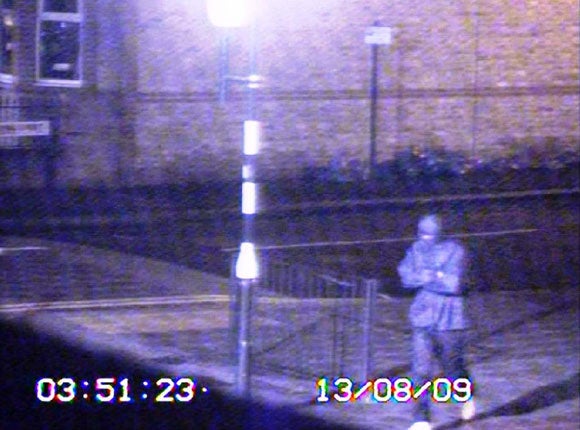How police could have stopped rapist a decade earlier

Police could have caught Delroy Grant more than 10 years earlier but mistakenly eliminated him from the manhunt after confusing him with a man of the same name.
So Grant, dubbed the Night Stalker, was free to commit a further 146 crimes. The error, made in 1999, has been investigated by the Independent Police Complaints Commission (IPCC) which recommended that two Metropolitan Police officers who ruled him out of the inquiry prematurely should be disciplined but will keep their jobs.
The details came to light yesterday for the first time as Grant, 53, was convicted at Woolwich Crown Court on 29 counts. Police confirmed that he claimed 203 victims in 17 years, although possibly as many as 500 – raping four and indecently assaulting 20. All were elderly men and women, the oldest of whom was 89.
Grant's modus operandi was to break into vulnerable premises wearing a balaclava. He frequently carried out daytime reconnaissance to identify houses occupied by lone pensioners and he often levered out double glazing panels to gain entry.
He frequently cut the telephone line and once inside he would often terrify his victims by shining a torch into their face after removing light bulbs.
It was following a burglary on 28 May 1999 that police missed the key opportunity to catch Grant, by which time he had already attacked 57 pensioners over seven years.
As he fled a house in Bromley, south-east London, a neighbour spotted his car and telephoned the police with the registration number. On checking it with the DVLA officers in Bromley were told the car belonged to a Delroy Easton Grant who lived in Brockley, south-east London.
Yet when officers checked the Police National Computer they chose to pursue a similarly named but unrelated Delroy Grant who lived in Hackney, east London, whose DNA profile did not of course match that of the stalker.
Police did also visit Delroy Easton Grant at the Brockley address revealed by an electoral roll check but he was not at home when officers called and was not interviewed until his arrest 10 years later. Over the next decade Grant committed a further three rapes, 20 sexual assaults and 123 burglaries.
Another opportunity to catch him was missed in March 2001 when a friend of Grant's telephoned the Crimestoppers helpline after recognising an e-fit on BBC1's Crimewatch programme. The caller gave two possible names one of which was Grant. It was never followed up.
Yesterday the Metropolitan Police apologised for the errors. Commander Simon Foy, head of homicide and serious crime at Scotland Yard, said: "We eliminated the wrong person. We acknowledge there was a fault and we acknowledge we could have caught him in 1999 and we apologise for what happened."
In its 17-year investigation, the Metropolitan Police took more than 3,000 DNA samples and had 26,500 potential suspects. But despite getting a sample of the Night Stalker's DNA in 1997 officers were never able to catch him. Although Grant had a long criminal record including armed robbery his last conviction was in 1991, four years before the introduction of the DNA database. Two behavioural profilers, a geographical profiler and a clinical psychologist were all deployed in the hunt for the Night Stalker to try to guess his movements. But senior officers admitted the profiles created by the so-called experts were wrong.
Instead Grant was caught through old fashioned police work after officers noted an increase in burglary in Shirley, south London, and decided to stake out the area.
For 15 days and nights police hid in houses and watched the suburban streets to see if he would strike. On the first night he committed two burglaries and on the second there was one. But agonisingly they were just outside of the surveillance area. In one case he was just one street away.
Realising that Grant would have needed a car to travel between the two houses he targeted on the first night, officers watched CCTV footage of the likely route he would have taken between the crimes. They worked out that their suspect was driving a silver Vauxhall Zafira.
It later emerged that Grant would scour an area looking for victims in the vehicle that was bought through the Government's Motability scheme.
People living near Grant's home remember seeing him heading off in his car late at night and returning at dawn the next day. But as he had held regular employment as a mini-cab driver no one thought it was anything out of the ordinary.
On 15 November 2009 – the 16th night of the Shirley surveillance operation – one officer spotted a Zafira parked outside a house in which Grant was hiding. Two hours later police saw a man running back to the vehicle which was driven off at speed. Grant was arrested and in the car police found a crowbar and the dark clothing that many of his victims had described.
The following day he was charged with the 22 offences but he refused to answer any questions when interviewed. Even now detectives have no idea why he chose elderly victims.
Cmdr Foy said: "[Grant committed] some of the most awful and disturbing crimes in the history of the Met. Between 1992 and 2009 he preyed on elderly people, violating them and their homes and causing deep distress and trauma to victims and their families. He is a perverted, callous individual. He has said absolutely nothing to us and did not show any sign of remorse."
Bookmark popover
Removed from bookmarks